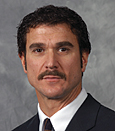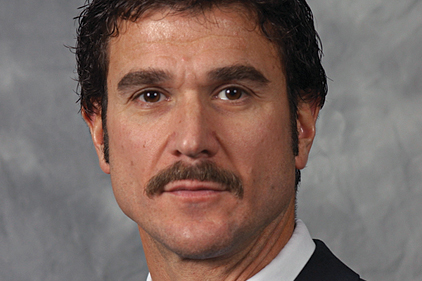Utilizing the system checklist below, a technician can analyze and perform efficient systematic troubleshooting on an HFC-134a medium-temperature

|
| John Tomczyk |
refrigeration system incorporating a TXV and liquid receiver. Let’s take the categories of the service checklist one by one for this undercharged system. (See Figure 1.)
Compressor Discharge — This temperature is very high compared to normal system operations. The 195˚F discharge temperature is caused from the evaporator and compressor running high superheat along with high compression ratios. When undercharged, do not expect the TXV to control superheat. The TXV may be seeing a combination of vapor and liquid at its entrance. The evaporator will be starved of refrigerant and running high superheat. The compressor now sees high superheat, and with the compression stroke will superheat the refrigerant even more. Compression ratios will also be elevated giving the system a higher-than-normal heat of compression. Compression ratios will be high from low evaporator pressures. This will give the system very low volumetric efficiencies and cause unwanted inefficiencies with low refrigerant flow rates. The compressor will now have to compress much lower pressure vapors coming from the suction line to the condensing pressure. This requires a greater compression range and a higher compression ratio. This greater compression range from the lower evaporator pressure to the condensing pressure is what causes compression work and generates some heat of compression. This increased heat may be seen by the high compressor discharge temperature.
However, because of the lower flow rates from the lower volumetric efficiencies, a somewhat low load is seen by the compressor. This low load is what keeps the discharge temperature from getting too hot.
In conclusion, higher compression ratios and higher superheats are what cause the discharge temperature to be somewhat high. Remember, the discharge line sees all of the superheat coming to the compressor, the motor heat generated, and the heat of compression.
The limit for any discharge temperature measured about 3 inches from the compressor on the discharge line is 225˚. The back of the discharge valve is usually about 50˚-75˚ hotter than the discharge line. This would make the back of the discharge valve about 250˚-300˚. This could vaporize oil around the cylinders and cause excessive wear. At 350˚, oil will break down. Overheating of the compressor will soon occur. Compressor overheating is one of today’s most serious field problems. Try to keep your discharge temperatures below 225˚ for longer compressor life.
High Evaporator Superheats — Since the evaporator is starved of refrigerant from the undercharge, there will be high evaporator superheats. This, in turn, will lead to high compressor (total) superheats. The receiver is not getting enough liquid refrigerant from the condenser because of the shortage of refrigerant in the system. This will starve the liquid line and may even bubble a sight glass if the
condition is severe enough. The TXV is not seeing normal pressures and may even be trying to pass liquid and vapor from the starved liquid line. The TXV will also be starved and cannot be expected to control superheat.
High Compressor Superheats — Again, since the liquid line, TXV, and evaporator are being starved of refrigerant from the undercharge, so will the compressor. This can be seen in the high compressor superheat reading.
Low Condenser Subcooling — Because the compressor is seeing very hot vapors from the high superheat readings, the gases entering the compressor will be much expanded and have a low density. The compression ratio will be high from the low suction pressure, causing low volumetric efficiencies. The compressor is simply not pumping much refrigerant. All components in the system will be starved of refrigerant. The 100 percent saturated liquid point in the condenser will be very low. This will cause a low condenser subcooling. The condenser is simply not receiving enough refrigerant vapors to condense it to a liquid and feed the receiver. Condenser subcooling is a good indicator of how much refrigerant charge is in the system. A low condenser subcooling can mean a low charge. A high condenser subcooling can mean an overcharge, but not always.
This is not true for capillary tube systems having no receiver. A capillary tube system can run high subcooling simply from a restriction in the capillary tube or liquid line. The excess refrigerant will accumulate in the condenser, causing high subcooling and high head pressures. If a TXV receiver system is restricted in the liquid line, most of the refrigerant will accumulate in the receiver, with a bit in the condenser. This will cause low subcooling and low head pressure.
Low Compressor Amps — High superheats will cause compressor inlet vapors from the suction line to be much expanded. This will decrease their density. Low-density vapors will enter the compressor and that will mean low refrigerant flow through the compressor. This will cause a low amp draw because the compressor doesn’t have to work as hard compressing the low-density vapors. Low refrigerant flow will also cause refrigerant-cooled compressors to overheat.
Low Evaporator Pressure — Low evaporator pressure is caused from the compressor being starved of refrigerant. The compressor is trying to draw refrigerant into its cylinders, but there is not enough refrigerant to satisfy it. The entire low side of the system will experience low pressure.
Low Condensing Pressure — Because the evaporator and compressor are being starved of refrigerant, the condenser will also be starved. Starving the condenser will reduce the heat load on the condenser because it isn’t seeing as much refrigerant to reject any heat. With not as much heat to accept, thus rejected from the compressor, the condenser will be at a lower temperature. This lower temperature will cause a lower pressure in the condenser because of the pressure/temperature relationship at saturation.
The temperature difference between the condensing temperature and the ambient is called the condenser’s Delta T (ΔT). The service industry often refers to this as the condenser split.
As the condenser sees less and less heat from the compressor because it is being starved from the undercharge of refrigerant, the condenser split will decrease. No matter what the ambient is, the condenser split — or in other words, the difference between the condensing temperature and the ambient — will remain the same if the load remains the same on the evaporator. Condenser split will change if the heat load on the evaporator changes. As evaporator heat loads increase, the split will increase. As evaporator loads decrease, the split will decrease.
Publication date: 11/4/2013
Want more HVAC industry news and information? Join The NEWS on Facebook, Twitter, and LinkedIn today!










